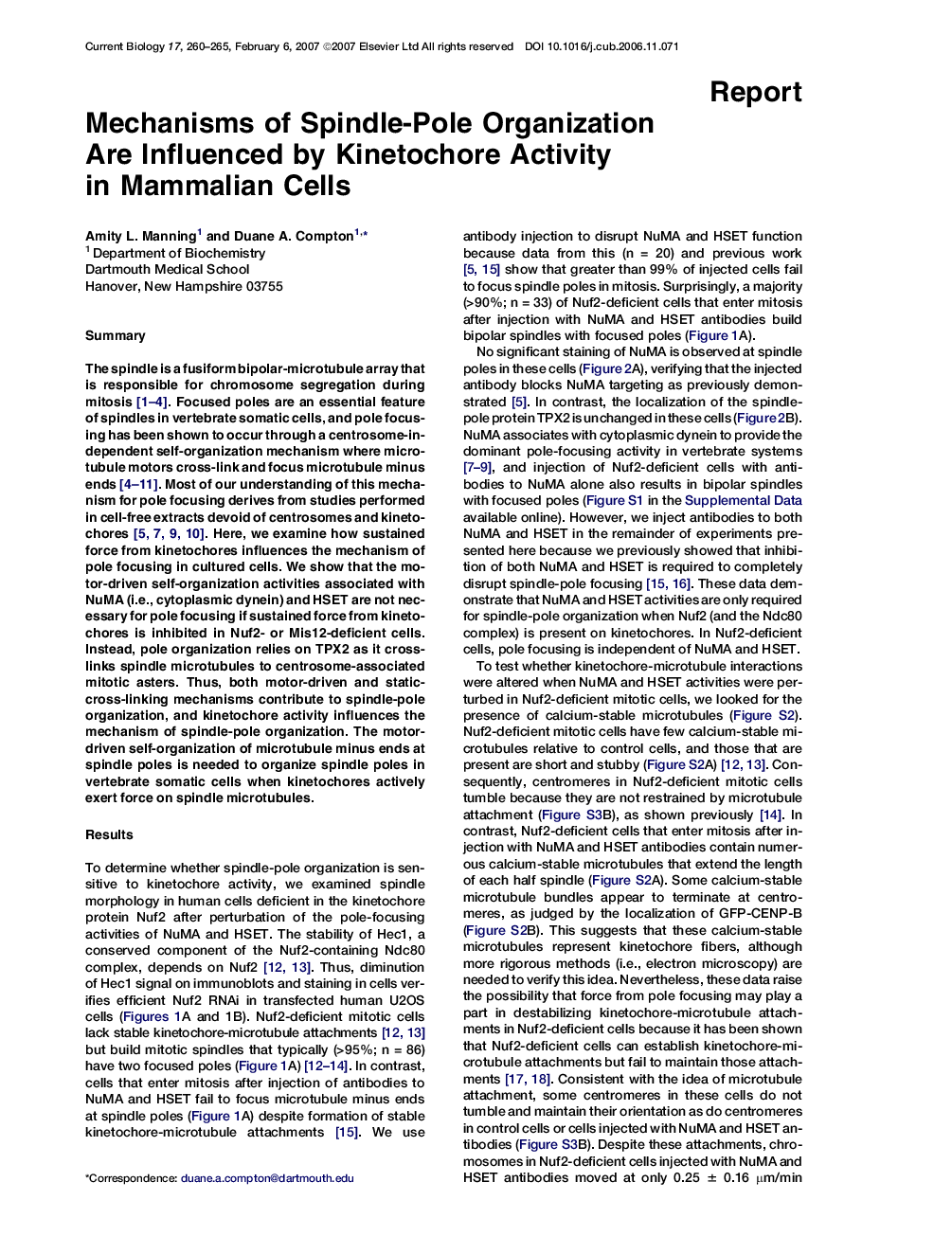| Article ID | Journal | Published Year | Pages | File Type |
|---|---|---|---|---|
| 2044512 | Current Biology | 2007 | 6 Pages |
SummaryThe spindle is a fusiform bipolar-microtubule array that is responsible for chromosome segregation during mitosis 1, 2, 3 and 4. Focused poles are an essential feature of spindles in vertebrate somatic cells, and pole focusing has been shown to occur through a centrosome-independent self-organization mechanism where microtubule motors cross-link and focus microtubule minus ends 4, 5, 6, 7, 8, 9, 10 and 11. Most of our understanding of this mechanism for pole focusing derives from studies performed in cell-free extracts devoid of centrosomes and kinetochores 5, 7, 9 and 10. Here, we examine how sustained force from kinetochores influences the mechanism of pole focusing in cultured cells. We show that the motor-driven self-organization activities associated with NuMA (i.e., cytoplasmic dynein) and HSET are not necessary for pole focusing if sustained force from kinetochores is inhibited in Nuf2- or Mis12-deficient cells. Instead, pole organization relies on TPX2 as it cross-links spindle microtubules to centrosome-associated mitotic asters. Thus, both motor-driven and static-cross-linking mechanisms contribute to spindle-pole organization, and kinetochore activity influences the mechanism of spindle-pole organization. The motor-driven self-organization of microtubule minus ends at spindle poles is needed to organize spindle poles in vertebrate somatic cells when kinetochores actively exert force on spindle microtubules.
